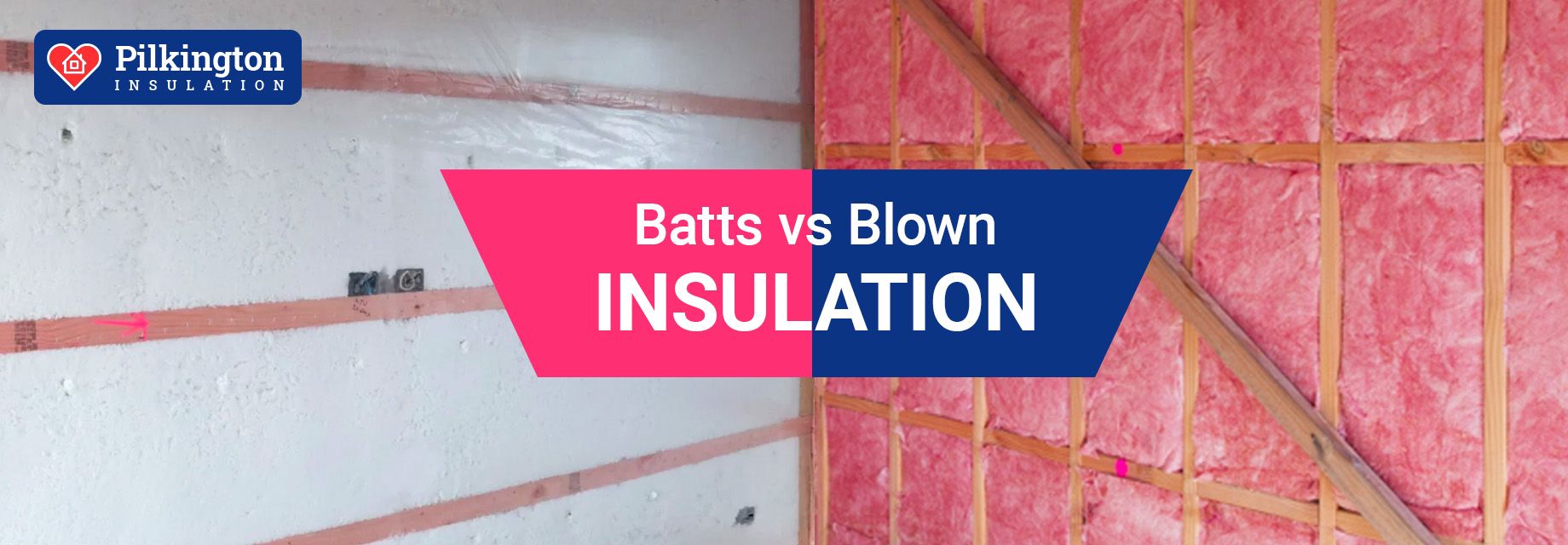
Batts vs blown insulation – Which insulation option is right for you?
Batts vs Blown Insulation?
One of the question’s we are regularly asked by customers is which type of insulation product they should use in their home. With so many options out there it’s easy to get a little confused. In this article we’re going to specifically look at batts vs blown insulation and discuss the differences between these two products.
An overview of Batts Insulation

Firstly, Batts Insulation is generally a fibreglass or mineral wool-based insulation. They are available as manufactured rolls and also pre-cut industry sizes.
Batts have typically been used as the primary form of insulation when constructing a new house. This is since they are quick and easy to install at the framing stage of a build while the linings are off. Sometimes installers choose to install batts in the roof but this is rare due to its low thermal rating. Batts insulation is much harder to install as a retrofit insulation product because of the need to remove the houses linings to install.
One of the down sides of batts insulation is that it typically has lower R-Values that other forms of insulation. The general R-Values of batts insulation rage between R1.8 and 2.8. While this is usually ok for a wall insulation product, in New Zealand most roofs require a higher thermal insulation value.
Recently the government announced changes to the Building Code which will require much higher thermal performance levels than previously required. You can have a look at the new Acceptable Solution H1/AS1 document here. These changes come into effect from next year and will mean that most batts products currently available will not meet the new standards. We go into more detail about the changes to H1 Energy Efficiency in our recent article.
The good news is, manufacturers around the country are looking at their product ranges and starting to introduce new Batt products with higher thermal values however these products are likely to be more expensive than traditional batts products.
Blown Insulation – A great product for insulating existing houses

Blown Insulation is a loose-fill or granular substance, made from specialised recycled materials. It’s a perfect insulation product which can fill up gaps often left by batts insulation.
Installing blown insulation in a new build is more complicated than a batts product. Blown insulation has higher performance levels than batts products and designers use this when developing high performance and passive home builds. This market is rapidly developing in New Zealand, and we could see this become more common in the new build sector, especially with the upcoming government changes.
The typical use for blown insulation is when adding retrofit insulation to an existing home. It’s particularly useful as wall insulation and can be easily added without having to remove the home’s linings. For your roof, installers blow insulation across the top of your ceiling and rafters. In the walls, installers blow insulation through small holes in the walls. Installers will repair the holes after installation and leave the home without damage.
Blown insulation has higher installed densities than batts which is one of the main product advantages. This gives higher R-Values and better thermal performance which is particularly useful in the South Island.
Our verdict on batts vs blown insulation?
So when weighing the choice between batts vs blown insulation, the reality is that both these products have a place in the market. Each home is different and it’s important that you choose the right product for the type of house you’re insulating. Pilkington Insulation provide a free home assessment and can provide recommendations and advice about selecting batts vs blown insulation. Contact us today to book your free home assessment.
